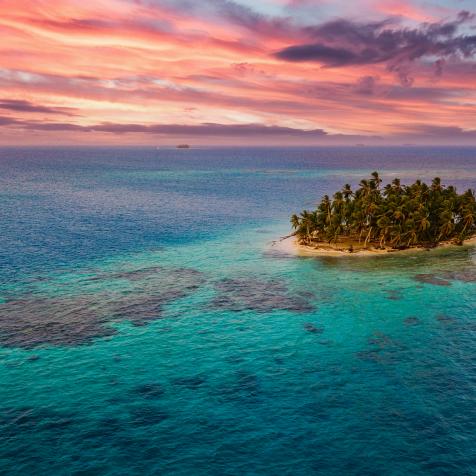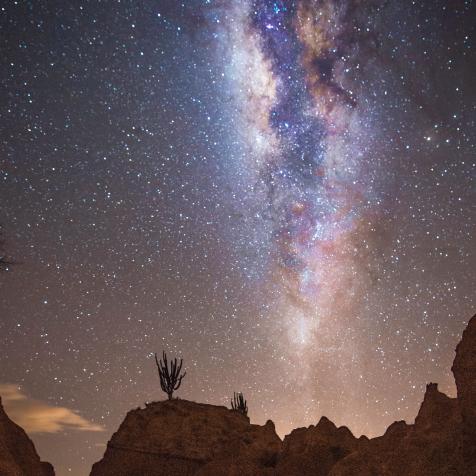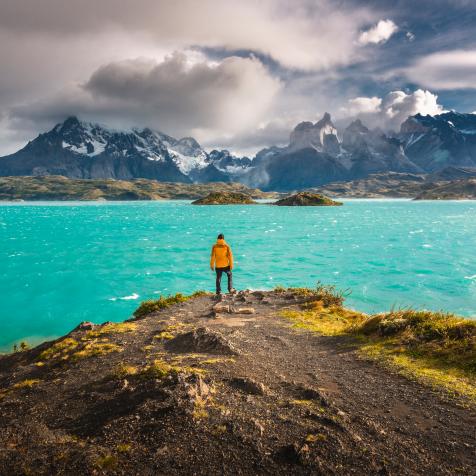
Enzo Barracco
The Galápagos Islands: In Darwin's Wake
From the pages of The Explorers Journal, climate change artist Enzo Barracco takes us on a remarkable journey into The Galápagos Islands, capturing the unique ecosystem that inspired Charles Darwin's groundbreaking work on evolution and natural selection.
"By far the most remarkable feature in the natural history of this archipelago…is that the different islands to a considerable extent are inhabited by a different set of beings…I never dreamed that islands, about fifty or sixty miles apart, and most of them in sight of each other, formed of precisely the same rocks, placed under a quite similar climate, rising to a nearly equal height, would have been differently tenanted.…It is the fate of most voyagers, no sooner to discover what is most interesting in any locality, than they are hurried from it; but I ought, perhaps to be thankful that I obtained sufficient materials to establish this most remarkable fact in the distribution of organic beings.” – Charles Darwin, Journal and Remarks, 1832-1836

Enzo Barracco
Sunset on Kicker Rock off the Northwest Coast of San Cristóbal.
It has been nearly two centuries since the British naturalist Charles Darwin embarked on a five-year voyage aboard the HMS Beagle, during which he visited the Galápagos, in 1835. Recording his observations in his Journal and Remarks, published in 1839 and posthumously re-titled The Voyage of the Beagle, Darwin was struck by the evolutionary diversity that existed within such a small geographical region. It was during his travels through this volcanic archipelago that the foundations were laid for his groundbreaking work on natural selection.
Inspired by Darwin’s voyage, I have long dreamed of visiting the Galápagos, but it wasn’t until I completed my first book, The Noise of Ice: Antarctica, that I realized how much the unique ecosystem of the islands was influenced by the ocean currents emanating from the White Continent. For me, that alone was reason enough to make the Galápagos the focus of my most recent documentary project.

Enzo Barracco
A Blue-Footed Booby (Sula Nebouxii) perches on Kicker Rock in the Galápagos Islands.
My travels there this past February took me to the islands of Santa Cruz, Santa Fé, San Cristóbal, Española, Floreana, Isabela, and Fernandina, where over the course of nearly a month I was able to commune with extraordinary wildlife—both on land and offshore. For me, the voyage was a journey back in time, the fragile beauty and biological diversity of the Galápagos evincing a raw, primal age before the dawn of humankind.
A Voyage Back in Time to The Galápagos Islands 7 Photos
From the pages of The Explorers Journal, photographer Enzo Barracco captures the rich biodiversity and raw beauty of the Galápagos, nearly two centuries after Charles Darwin explored this volcanic archipelago.
About Enzo Barracco
Having made his mark in the fashion industry, London-based Italian photographer Enzo Barracco has recently turned his lens onto the natural world, having had a passion for nature and environmental conservation since an early age. His images, which have graced the pages of Vogue Italia, have been exhibited at the Royal Geographical Society in London. His most recent book, The Noise of Ice: Antarctica, with a foreword by Sir Ranulph Fiennes, was published by Merrell in 2016. For more on his work, visit enzobarracco.com.
This story originally appeared in the pages of The Explorers Journal, the official quarterly of The Explorers Club since 1921. From vast ocean depths to the frontiers of outer space, The Explorers Journal offers readers first-hand reporting from those pushing the limits of knowledge and human endurance. For more stories, subscribe today.




















